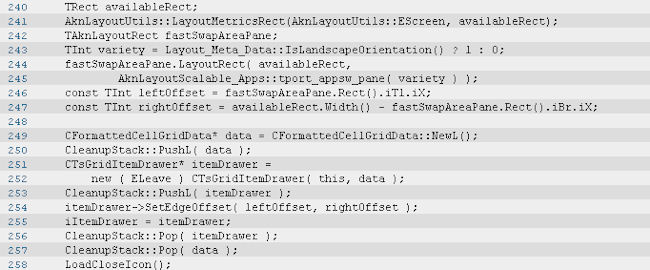The move to open source started when Nokia bought out the remaining shareholders in Symbian Ltd. and created the Symbian Foundation with the intent to move all Symbian code to open source. The move to open source was expected to take two years; in the intervening time, the code was made available to Foundation members under the Symbian Foundation License (i.e. free, but not open source).
The Symbian Foundation begun operations on Januray 1st 2009, but did not have its inaugural board meeting until February 5th (a year ago tomorrow) and began work in earnest on April 1st 2009. Less than a year later, the transition of the entire operating system to open source is complete.
We spoke to Lee Williams, asking him about the announcement, the challenges involved and the implications for the Symbian and mobile ecosystem:
Implications
The Symbian Foundation estimate they are releasing 40 million lines of source code into open source. This makes it one of the biggest ever contributions to open source. To put this into perspective, Android has around 11 million lines of source code, the Linux kernel has 11.5 million lines of source code and Firefox has around 2 million lines of source code. (As the primary contributor to the Symbian Foundation, this automatically makes Nokia a leading open source company.)
If you printed out all the source code on A4 paper you would have a pile of paper 133 metres tall (almost three times the height of Nelson's Column). If you laid the A4 paper sheets end to end it they would reach 250 miles (400 km).
The statistics may be impressive, but what really matters is what it enables. It means that the Symbian platform has open code to go with its open governance model. This makes it much easier for companies and developers to start using the code, learning from it and contributing to it. It fulfills the promise of the Symbian Foundation that any company or individual can jump in and directly influence the future direction of the platform. It enables companies to take the code and use it for any purpose they can envision; it means we are much more likely to see non-phone devices powered by the Symbian platform.
The move to open source is the keystone in the the Symbian Foundation's belief that a philosophy of openness will allow it to to provide 'the foundation for unlimited mobile development' and allow innovation to occur faster than ever before.
Where can I get it?
All 108 packages making up the Symbian platform are available from the Symbian Foundation web site (tiny.symbian.org/open). They are made available under the EPL license.
You can also download complete development kits for creating both software (Symbian Developer Kit) and devices (Product Development Kit). These kits are from the Symbian^3 release, which is currently being finalised and will be feature complete later in Q1 2010.
Example source code (from Symbian^3 Homescreen package)
From the press release:
Lee Williams, Executive Director of the Symbian Foundation, said:
"The development community is now empowered to shape the future of the mobile industry, and rapid innovation on a global scale will be the result. When the Symbian Foundation was created, we set the target of completing the open source release of the platform by mid-2010 and it’s because of the extraordinary commitment and dedication from our staff and our member companies that we’ve reached it well ahead of schedule."

